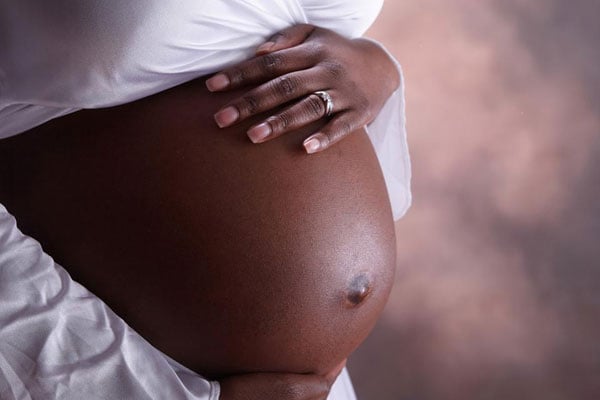Prime
Namubiru’s journey of battling leukemia

Viola Namubiru transformational journey after battling with leukemia. Photos/Kelvin Atuhaire.
What you need to know:
After spending six months in hospital and undergoing rounds of chemotherapy, blood transfusion, antibiotics, antivirals, antifungals and steroids, Annet Victoria Namubiru has a reason to smile. She was treated by a team of oncologists and she went into complete remission. She is currently on surveillance and is steadily beating lukemia.
Annet Victoria Namubiru had never imagined that she would suffer from cancer.
It all started with body weakness and she hoped she would get better. But she was wrong. The illness had come to drain life out of her lively body, to snatch away the glow and smile on her face and to leave her parents penniless.
“On the morning of March 2015, I woke up so pale and weak. But I managed to attend my lectures because I had a month to sit for my final examinations. Days later, I went to Kabale Regional Hospital for treatment,” she says.
“The doctor who attended to me said I was stressed by the forth coming exams and all I needed was rest,” she recalls. Namubiru returned to school to do revision and discussions with her peers. But she grew weaker each passing day. She knew something was wrong, but she could not tell exactly what it was.
Namubiru says sleeping became difficult and each time she slept, it felt like she was losing her breath. But the worst was yet to happen.
Fear for the unknown
At this point, the drastic changes in her health began to worry her. Other than the persistent general body weakness, she was one morning surprised by the bleeding gum and small blood clots from her mouth. She decided to buy a new toothbrush to deal with the irritation on the gums.
As if bleeding was not bad enough, during that month, her menses lasted for three weeks. All these health mysteries left her with lots of questions, without proper answers.
“Previously, my menstruation periods lasted three to four days, but this time round, I bled for three weeks. After that, I also woke up to a strange bruise on the back of my left leg. This was seen by a friend and I remember her asking if I had been bitten by a snake, but that was not the case. The following morning, bruises were all over my body.”
This forced her to go to the hospital again. This time round, she requested for complete blood count test. Namubiru says her results shocked the doctor and he requested the lab technologist to conduct another CBC test.
“When the doctor handed me the results, the haemoglobin levels were at five yet for a normal human being, haemogobin must be between 11 and 15, platelets were nine. I was told I only had one white blood cell remaining,” she says.
The doctor wrote a reference letter for her admission to Mulago National Referral Hospital. Meanwhile, she had two weeks to sit her final exams. She was immediately put into an ambulance and rushed to Mulago hospital in Kampala.
Face to face with the reality
Namubiru says they left Kabale Regional Hospital at 7pm and by 12am, they had arrived at Mulago hospital. Her parents were informed about her ill-health.
While several tests were recommended, neither the doctor nor Namubiru anticipated it would turn out to be cancer.
The medical forms from Kabale hospital were handed over to one of the doctors, who, after a thorough assessment, informed other doctors that she was suffering from malignancy.
“When the doctor mentioned the term malignancy, I knew it meant cancer because I had come across this medical term during my nursing lectures. At this point, I knew I was going to die at any moment. When the doctors left the room, I turned to my mother and told her I had cancer. She could not believe it considering that there was no history of cancer in our lineage,” she says.
Namubiru says the days that followed saw her undergo numerous tests and among them were a bone marrow biopsy.
On April 28, 2015, the doctor revealed that she had Acute Promyelocytic Leukemia (APL), one of the most dreaded disease that kills within months. On April 29, 2015, Namubiru was transferred to the cancer institute. An hour later, on her hospital bed in the ward, one of the cancer patients died and she witnessed as health workers wheeled the corpse out of the ward.
“Every patient in the ward seemed lifeless. The ward was as silent as a graveyard. All the patients were on life supporting machines. For a moment, I was staring at death and I knew I would be the next person,” she says.
Meanwhile, she kept bleeding and she had to receive two units of blood everyday, and platelets.
Not about to give up
Before her admission to Mulago hospital, Namubiru was preparing for her final exams that were due on May 4, 2015. But because of her health condition, she thought her dream of becoming a nurse had been cut short.
To her surprise, on May1, 2015, the deputy principal at Kabale University then, visited her at the hospital and gave her a uniform and an examination card.
Her school principal talked to the doctors to let her sit her final exams. The examinations were supposed to be done at the nearest nursing hospital and in this case, the nearest was Jinja School of Nursing. Her father drove her to Jinja for three days.
Medication
After doing examinations, she was introduced to antibiotics, antivirals, antifungals, steroids, rounds of chemotherapy and blood transfusion.
“Dr Henry Ddungu, an oncologist at the Uganda Cancer Institute, advised us to first buy Atra, a drug used to treat acute promyelocytic leukemia. This drug was to be taken along with chemotherapy,” she says.
Namubiru’s mother tried consulting with different pharmaceutical companies and was charged Shs3m to import one tin of Atra, a drug that she urgently needed to save her daughter’s life. The doctor had recommended two tins every month.
Namubiru’s mother sold her property to raise the required amount, but the pharmaceutical company failed to find the medicine.
To Namubiru, this was a setbackbecause her immune system had been weakened. She had developed sores in the mouth, the gums were continously bleeding. Her body was all bruised and the normal pads could no longer contain her heavy flow. At this point, the doctors put her on a life supporting machine.

A ray of hope
Namubiru says when they were almost giving up, Dr Abraham Omoding, promised to find find the medicine.
A week later, she received the medicine and she was also started on chemotherapy. “The doctor said he had found Atra, but there was no assurance that I was going to be fine. I remember him saying “leukemia might not kill you. But the medicine is too strong yet your immunity is low,” she recalls.
She says her chemo ran for 24 hours and contained daunorubicin and cytarabine. On top of that, she had to take Atra.
Despite the side effects that chemotherapy left on her body, Namubiru says after one month, the sores in her mouth and the bleeding had significantly reduced.
Another bone marrow test was carried out and unlike in the past, this time, results indicated that I was recovering and my body was responding well to treatment. This was a great milestone.
After spending five months in the hospital, Namubiru was finally discharged, but had to report to her doctors twice a week. Only a week later, she was rushed back to hospital and readmitted for a whole month. At this point, she lost all her hair.
At the beginning of September 2015, another test was carried out. When results came back, Dr Ddungu came to my sickbed with excitement. He declared that no cancer cell had been detected in my body.
“This sounded like a dream. Ordinarily, the only way to survive leukemia is by conducting a bone marrow transplant. I doubted the doctor’s results,” she says.
The doctor advised her to continue taking medication and report to hospital every Wednesday. This was going to be her lifestyle for one year.
What doctors say
Dr Henry Ddungu says Namubiru had a Acute Promyelocytic Leukemia, an aggressive type of cancer. In APL, there are too many immature blood-forming cells in the blood and bone marrow and these lead to a shortage of normal white blood cells, red blood cells and platelets in the body. It is caused by a mutation between chromosomes 15 and 17.
“We started her on treatment - chemotherapy plus Atra. She was treated by a team of experts and she, indeed, went into complete remission. She is currently on surveillance and doing well,” Dr Ddungu confirmed.
Recovery
How she got another chance
In June 2016, her name appeared on the list of graduates at Kabale University. Today, she is working with Baylor Pharmacy and in 2018, she gave birth to a healthy baby.
Namubiru says she is free from leukemia and, apparently is not taking any medication.
“I no longer have cancer, and every single day, I am getting stronger. I am now healthy. I am one of the lucky ones, and I am deeply thankful to God because it was by his grace.”




